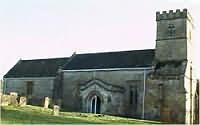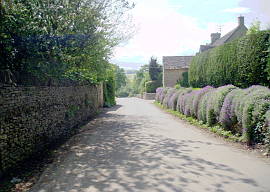
BANISTER HALL, also called Darwen Hall, lies in the northern part of the township towards Cuerdale and not far from the northern bank of the River Darwen. The estate probably represents a feoffment to a kinsman by one of the early lords of Walton. Henry Banastre had lands in Cuerdale and Walton in the early part of the reign of Henry III; Richard his son occurs in 1246 and 1248 and was the father of Henry, the elder, and Geoffrey, contemporaries of Robert Banastre, their chief lord. Henry had sons, Henry the younger and William, both contributors to the subsidy levied in 1332, and Richard, who married Alice daughter of Roger son of Adam de Preston, and was ancestor of the Banastres of Preston.
Lawrence Banastre of Darwen Hall married Jane daughter of Richard Hoghton, kt., and with his son and heir Richard is named among the out-burgesses at Preston gild in 1542. He died in 1558, leaving Richard his second but eldest surviving son, then aged seventeen (sic) years. Richard married Isabel daughter of Piers Farington of Farington, gent., and attended Preston gild in 1562 as an out-burgess with sons Thomas, Lawrence, George and Henry. As 'Richard Bannister, gent., of Darwin Hall alias Bannister in Walton' he was named as a debtor of £15 in the will of his uncle Alexander Hoghton, esq., in 1581. He died before the date of Preston gild in 1582, at which five of his sons were present, including Thomas the eldest, with his sons Richard and George. Thomas married Alice daughter of Peter Stanley of Bickerstaffe. In 1590 he joined his brothers Lawrence and George in the alienation of the estate to Edward Walmsley, gent., younger son of Thomas Walmsley of Showley, esq., who died in 1604 seised of 'Darwyn Hall,' otherwise Banister Hall, which he held of Thomas Langton, kt., in socage, leaving Thomas his son aged nine and a-half years. Thomas married Frances daughter of Edward Stanley of Moor Hall, by whom he had an only daughter Anne, the wife of Radcliffe Hoghton. She died in 1641 seised of this estate, her uncle Edward Walmsley being her heir. In 1649 he obtained the discharge of the estate from sequestration, he having been in 'the first war'; his fine was £114. In 1655 he petitioned for the discharge of other lands in Walton sequestered for the recusancy of Frances wife of his brother Thomas Walmsley, she being then recently dead. He held the hall and demesne in 1662 under a free rent of 18d. to the lord of the honor of Clitheroe, and died in 1673, when his nephew William Winckley of Billington succeeded to the estate as eldest surviving son and heir of Thomas Winckley by his wife Rosamond eldest daughter of Edward Walmsley the elder. He married Isabel daughter of Robert and sister and co-heir of William Elston of Brockholes. Upon his death in 1703 he was succeeded by his eldest surviving son Edward, (fn. 63) who sold the estate in 1739 to John Atherton of Preston, who devised it by will in 1768 to his son John.
 After lunch we took a short drive towards the little town of Picinisco on the edge of the Abruzzo National Park. Cousin Mario had told us that the English author D.H. Lawrence, and his wifeFrieda, had once stayed in this area in an isolated, little house, owned by Orazio Cervi. Lawrence wrote about his experiences here during the Winter of 1919.
After lunch we took a short drive towards the little town of Picinisco on the edge of the Abruzzo National Park. Cousin Mario had told us that the English author D.H. Lawrence, and his wifeFrieda, had once stayed in this area in an isolated, little house, owned by Orazio Cervi. Lawrence wrote about his experiences here during the Winter of 1919.  Having cut short his stay inRome, Lawrence described his arduous journey, by train to Cassino, by post-omnibus up into the mountains toAtina, by cart to an inn and on foot with a donkey at the end.
Having cut short his stay inRome, Lawrence described his arduous journey, by train to Cassino, by post-omnibus up into the mountains toAtina, by cart to an inn and on foot with a donkey at the end.  Lawrence describes the mule track up to Picinisco as being “a sheer scramble – no road whatever” andAtina, where they went to the market to shop for their weekly supplies, as being“perfectly wonderful to look at” for “costume and colour” but which offered only basic provisions and “no wine hardly”.
Lawrence describes the mule track up to Picinisco as being “a sheer scramble – no road whatever” andAtina, where they went to the market to shop for their weekly supplies, as being“perfectly wonderful to look at” for “costume and colour” but which offered only basic provisions and “no wine hardly”. He describes the days as being “hot and lovely”, however the nights were already freezing amid the snow-capped peaks. As the weather was turning colder, and as he suffered from a weak chest and the weather was turning colder, he and his wife decided it would be best to move on to the milder climes of Capri.
He describes the days as being “hot and lovely”, however the nights were already freezing amid the snow-capped peaks. As the weather was turning colder, and as he suffered from a weak chest and the weather was turning colder, he and his wife decided it would be best to move on to the milder climes of Capri.



 The Norman church, situated in a large church yard bordered by chestnut trees, has some interesting items of early sculpture built into the lower stages of its tower.There is also a blocked-up Norman doorway in the south wall of the chancel.
The Norman church, situated in a large church yard bordered by chestnut trees, has some interesting items of early sculpture built into the lower stages of its tower.There is also a blocked-up Norman doorway in the south wall of the chancel. 

